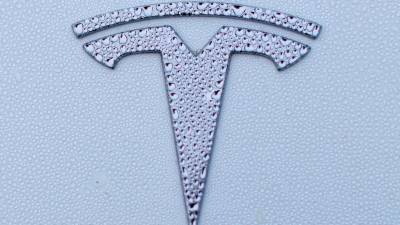SAN FRANCISCO: Tesla has introduced more affordable versions of its Model Y SUV and Model 3 sedan, but the starting prices of $39,990 and $36,990 have disappointed some investors and analysts.
Chief Executive Officer Elon Musk has long promoted the idea of an affordable electric vehicle, stating last year that a price below $30,000 after incentives was crucial for attracting a broader customer base.
The company is attempting to counter declining sales of its ageing vehicle lineup amid intensifying competition in key markets like Europe and China.
Tesla also faces the challenge of its vehicles no longer qualifying for the valuable $7,500 U.S. federal tax credit that recently expired.
These new Standard versions sacrifice some premium features and finishes but maintain driving ranges exceeding 300 miles.
Tesla’s stock closed down 4.5% following the announcement, reflecting investor disappointment with the pricing strategy.
Wedbush analyst Dan Ives expressed particular disappointment that the new models are only approximately $5,000 cheaper than the next-level trims.
The new Standard versions actually cost more than Tesla’s cheapest U.S. models did in September when the now-expired tax credit was still available.
Musk previously cancelled plans for an all-new $25,000 electric vehicle, opting instead to create lower-priced versions based on existing models.
This decision has raised concerns among investors and analysts about potential sales cannibalization of existing vehicles and limited growth potential.
Shay Boloor, chief market strategist at Futurum Equities, described the move as essentially a pricing adjustment rather than a significant product innovation.
He expressed doubt that this strategy would unlock substantial new demand at the scale Tesla requires.
Some automakers in the United States have already reduced prices or found alternative mechanisms to extend incentive benefits following the loss of tax credits.
Analysts believe pricing below $40,000 will help Tesla compete against upcoming models like Chevrolet’s Equinox, Hyundai Ioniq 5, and Kia’s EV4 next year.
Many industry observers had expected Tesla to implement more substantial price reductions below the $30,000 threshold.
Camelthorn Investments advisor Shawn Campbell questioned whether the current pricing strategy adequately addresses competitive threats from lower-cost Chinese manufacturers in global markets.
He emphasized that Tesla ultimately requires a sub-$30,000 electric vehicle to remain competitive long-term.
In Europe, where Musk’s political stances have reportedly affected brand loyalty, the new models will compete against more than a dozen electric and plug-in hybrid vehicles priced below $30,000.
Tesla’s sales reached a record in the quarter ending September as consumers rushed to utilize the expiring EV tax credit.
Industry expectations suggest sales may slow for the remainder of the year without a genuinely affordable vehicle option.
Musk acknowledged during Tesla’s second-quarter earnings call that consumer desire for electric vehicles remains high but affordability remains a significant barrier.
He stressed that making vehicles more affordable is essential for broader adoption.
Both Standard versions offer 321 miles of range but feature less powerful acceleration compared to Premium trims.
The vehicles are available for immediate ordering with deliveries scheduled to begin between December 2025 and January 2026 for many locations.
The Standard models do not include Autosteer, Tesla’s driver assistance system, or rear passenger touchscreens.
Tesla has removed the LED lightbar from the cheaper Model Y and both models feature textile seats with manually adjusted side-view mirrors.
Running Point Chief Investment Officer Michael Ashley Schulman compared Tesla’s strategy to swapping a premium identity for a mass-market approach.
He suggested Tesla is attempting to simultaneously occupy both premium and mass-market positions in the automotive industry.
Musk has been steering the company toward artificial intelligence initiatives including robotaxis and humanoid robots.
Affordable vehicles remain crucial for Tesla’s ambitious target of delivering 20 million vehicles over the next decade.
This sales target represents one of several operational milestones tied to Musk’s proposed $1 trillion compensation package from the company’s board. – Reuters
